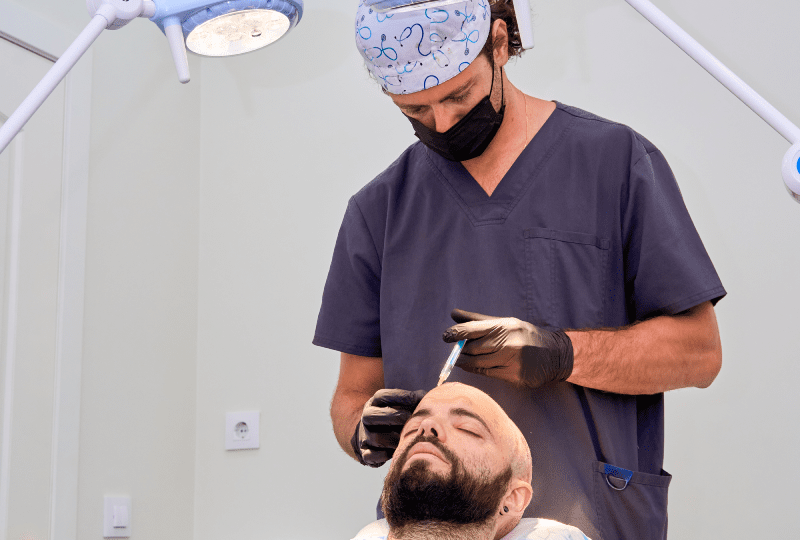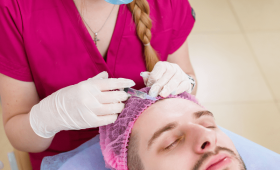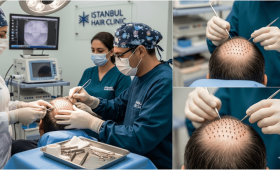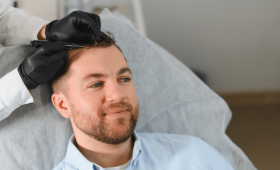Why Has Turkey Become An Attraction Center For Hair Transplantation?
Turkey has gained a worldwide reputation in the field of hair transplantation, and several factors contribute to this success. Primarily, clinics in our country utilize state-of-the-art equipment and employ highly experienced surgical teams trained to international standards. Despite these high-quality standards, the prices of the services offered are remarkably competitive compared to Europe and the USA.
Furthermore, integrating accommodation and treatment processes in hospitals with a tourism experience makes the process highly appealing to international patients. This combination of factors has positioned Turkey as a leader in aesthetic and medical tourism globally.
What Is The Most Important Criterion For Natural-Looking Results?
The most essential and critical criterion for achieving a natural-looking hair transplant is the design of the front hairline and the direction of implantation. The front hairline must be designed to suit the patient’s facial features, age, and head anatomy, maintaining a micro-irregular, zig-zag pattern. Additionally, the implanted grafts must be placed at the hair’s natural exit angle and direction, which is typically around 35-45 degrees. Improperly angled grafts or an artificial, ruler-straight hairline caused by an inexperienced team will result in an unnatural and poorly visible outcome, undermining the procedure’s success.
What Kind Of Preparation Process Is Required Before Hair Transplantation?
A detailed preparation process is necessary before the hair transplant operation for a successful and trouble-free recovery. Patients are strongly advised to completely stop or significantly reduce alcohol and cigarette consumption at least one week before the operation, as these can affect blood circulation and slow down the healing process. If the patient is regularly taking blood-thinning medications, their use must be stopped under medical supervision a certain period beforehand. Eating healthy, drinking plenty of water, and getting adequate sleep the day before the operation are also vital for overall body health and endurance during the procedure.
How Is The FUE Technique Applied And For Whom Is It Ideal?
The Follicular Unit Extraction (FUE) technique involves harvesting hair follicles one by one from the donor area using micro motors. This process is typically performed with fine-tipped tools measuring 0.6 to 1.0 mm in diameter. The FUE technique is ideal for patients who require a large number of grafts and need implantation over extensive areas. Since it leaves no stitch marks or linear scars in the donor area, the recovery process is quite fast and involves minimal pain. This popular method is frequently preferred due to its promise of both a high graft survival rate and genuinely natural-looking results.
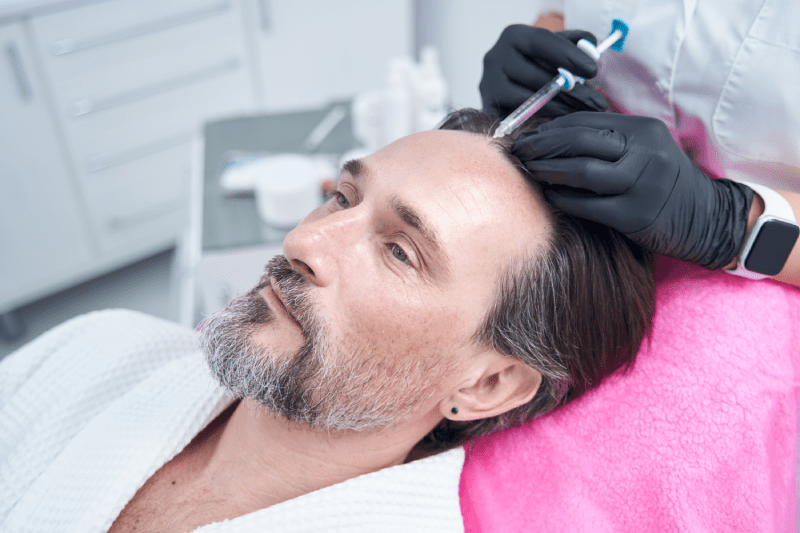
What Are The Main Differences Of The DHI Hair Transplant Technique?
The Direct Hair Implantation (DHI) technique differs from FUE by combining the channel opening and graft implantation stages into a single step. In DHI, a specialized tool called the Choi Implanter Pen is used; this pen holds the harvested graft and implants it directly into the skin. This method significantly reduces the time the grafts spend outside the body, which can increase their survival rate. Furthermore, DHI is often more suitable for implanting grafts between existing hairs in sparse areas and for operations that require less shaving of the entire head.
What Are The Advantages Of The Sapphire FUE Method Compared To Classic FUE?
Sapphire FUE is a variation of the classic FUE method where special blades with sapphire tips, instead of metal slits, are used to open the channels for graft implantation. Sapphire tips are thinner, sharper, and have a smoother surface than metal blades. Thanks to these properties, the channels can be opened in a smaller and more precise manner, leading to reduced tissue damage and accelerated healing time. Moreover, the use of sapphire tips allows for denser graft placement, significantly contributing to a fuller and more voluminous final appearance.
How Is The Number Of Grafts Determined And How Important Is It In Hair Transplantation?
The number of grafts is a vital parameter that directly determines the success and aesthetic density of the operation. Experts determine the graft count by considering the patient’s degree of hair loss (Norwood Scale), the size of the area to be implanted, and, crucially, the density of the hair follicles in the donor area. Detailed analysis and measurement of the hair roots lead to an estimated graft count. The final number is set by striking a realistic balance between the patient’s expectations and the capabilities offered by the donor area, which is a limited resource.
Why Is The Health And Sufficiency Of The Donor Area Of Critical Importance?
Since the donor area is the “source” of the hair transplant operation, its health and sufficiency are of critical importance. High-quality and dense grafts will grow healthily in the implanted area, ensuring a successful outcome. The nape area is generally preferred as a donor because the hair follicles there are genetically resistant to shedding. The correct and balanced utilization of the donor area is crucial for both preserving existing hair and conserving resources for potential future transplantations, making its management a key factor in long-term success.
How Should The Front Hairline Be Designed To Look Natural?
Designing a natural-looking front hairline is the most artistic part of a hair transplant operation and requires great expertise. The line should avoid symmetry and must have a slightly irregular, natural transition line. The starting point of the line should be determined by considering the patient’s facial muscle structure and forehead height. Single hair grafts should be implanted at the very front, while double and triple grafts should be used towards the back to increase density. This precise aesthetic approach is what guarantees the final result will be far from artificial.
Is Pain Felt During The Operation And How Is Anesthesia Applied?
Since the hair transplant operation is performed under local anesthesia, no pain or discomfort is felt during the procedure itself. A brief and minimal sting might be felt during the injection of the anesthetic; however, some modern clinics can eliminate even this initial discomfort by using needle-free anesthesia devices. Thanks to local anesthesia, the patient remains awake, can listen to music or watch a movie, and maintains a high level of comfort throughout the entire operation. Any minor discomfort that may occur after the anesthetic wears off is easily managed with prescribed simple painkillers.
How Long Does The Hair Transplant Procedure Take On Average And Why Is It So Long?
The hair transplant procedure is a lengthy operation, typically lasting 6 to 8 hours, depending on the number of grafts to be implanted and the technique used. The reason for this duration is that every stage of the process (graft harvesting, channel opening, and implantation) requires immense care and precision. It is crucial to work quickly yet flawlessly to preserve the viability of the grafts. Furthermore, regular breaks are provided during this time for the patient’s comfort, allowing them to rest and address their needs.
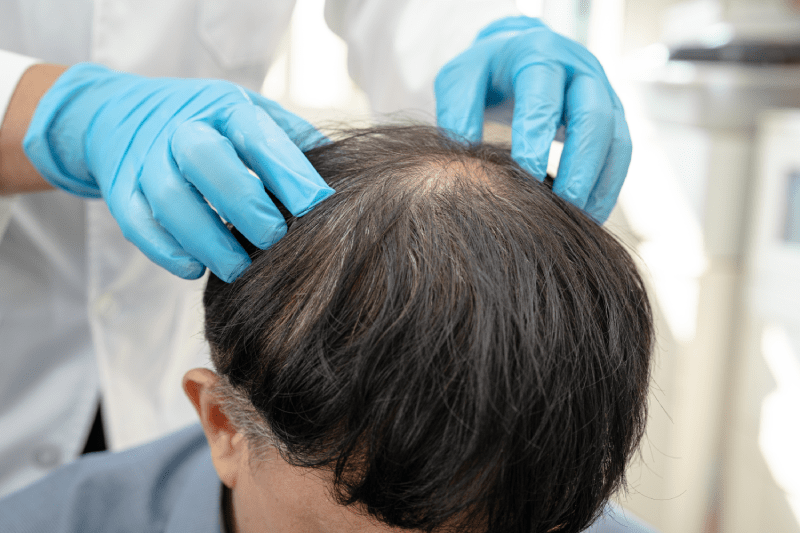
When And How Should The First Wash After Hair Transplantation Be Performed?
The first wash after a hair transplant should generally be performed within 48 to 72 hours after the operation, either by the clinic or strictly according to their detailed instructions. This wash is a critical step in the recovery process. High-pressure water is not directly applied to the implanted area; first, a special lotion is gently applied to soften the scabs. Then, the special shampoo is lightly foamed with fingertips and rinsed with low-pressure water. This delicate process ensures the scabs are cleaned without damaging the implanted grafts and maintains hygiene in the area.
What Is Shock Loss And When Does It Start And End?
Shock loss is the temporary shedding of a large portion of the implanted hair that occurs between 2 to 8 weeks after the hair transplant operation. This condition is a natural response of the hair follicles to the stress experienced during implantation. There is no need for concern, as only the hair strands are shed; the hair roots remain intact beneath the skin. The shock loss process usually concludes by the end of the 3rd month, immediately followed by the gradual growth of new and permanent hair.
How Long Does It Take For The Implanted Hairs To Fully Grow Out?
The complete and final growth of the implanted hair is a process that requires patience and usually takes 12 to 18 months. New hair growth begins within the first 3-4 months. By the end of the 6th month, typically about 60% to 70% of the implanted hair has reached a visible density. However, for the hair strands to thicken, strengthen, and reach full maturity, a period exceeding one year is necessary. It is important to remember that every individual’s healing and hair growth rate can vary.
Is Swelling (Edema) Normal After Hair Transplantation And How Can It Be Prevented?
Yes, it is quite common and entirely normal for mild swelling or edema to occur around the forehead and eyes after a hair transplant operation. This occurs due to the anesthetic fluids injected during the procedure and the body’s natural healing response. To minimize edema, it is important to sleep with your head elevated for the first 48 hours and to use the special headband or medications recommended by your doctor. The swelling is temporary and usually subsides on its own within 4-5 days after the operation.
Are There Special Shampoos And Lotions That Must Be Used After Surgery?
Yes, the use of shampoos and lotions specially formulated for the first and most critical phase of the recovery process is mandatory after a hair transplant operation. These products have gentle formulas that will not damage the implanted grafts. The lotion helps to soften scabs and moisturize the skin, while the special shampoo ensures gentle cleaning of the area and reduces the risk of infection. Your clinic will certainly provide you with these specialized products and detailed instructions for their use.
Which Sports Activities Should Be Avoided During The First Month?
During the first month after hair transplantation, heavy sports activities that can cause sweating and risk impact to the scalp should be strictly avoided. This specifically includes activities such as weightlifting, football, basketball, swimming, and saunas. Sweating can increase the risk of infection on the scalp and negatively affect the graft survival process. Light-paced walking can be done after the first 10 days, but doctor approval must be obtained before starting more intense activities.
What Are The Harms Of Alcohol And Cigarette Consumption After Hair Transplantation?
Alcohol and cigarette consumption after hair transplantation can seriously jeopardize the healing process and negatively impact the success of the operation. Cigarettes, due to the nicotine they contain, narrow blood vessels, reducing the amount of blood and oxygen reaching the newly implanted hair follicles. Alcohol, on the other hand, has a blood-thinning effect and can increase the risk of bleeding. For these reasons, it is absolutely essential to refrain entirely from alcohol and cigarette consumption for at least one week before and 10 to 15 days after the operation.
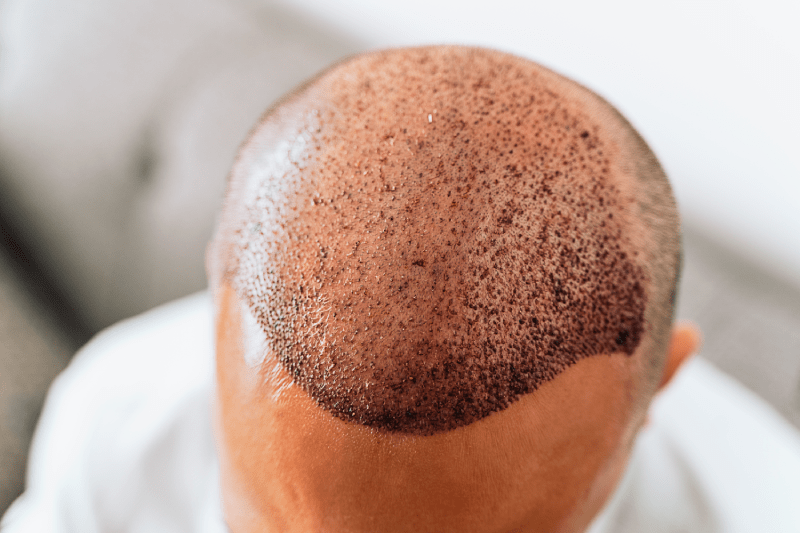
Is The Unshaven Hair Transplant Option Suitable For Everyone And What Is The Result?
The unshaven hair transplant option is suitable for individuals, especially women and men with small thinning areas, who do not want to shave their entire head due to professional or social reasons. However, this method is not suitable for everyone. If a large area needs to be implanted or if a very high number of grafts is required, the unshaven technique may not be practical. A team of experts will determine the most suitable method for you—shaven or unshaven—during the consultation, based on your specific needs.
Are The Results Achieved At The End Of The First Year Permanent?
Yes, the results obtained from the hair transplant operation are largely permanent and are expected to last a lifetime. The main reason for this is that the hair follicles used for implantation are harvested from the nape area, which is genetically resistant to the Dihydrotestosterone (DHT) hormone. These roots maintain their inherited resistance even after being transferred to their new location. However, since your existing hair may continue to shed, additional support like PRP or medication treatments may be considered to slow down this process.
How Should Protection From The Sun And Hat Use Be Managed After The Operation?
The implanted area must be strictly protected from direct sunlight for the first few weeks after hair transplantation. Sun rays can damage the newly implanted hair follicles and cause discoloration in the grafted area. Therefore, it is recommended to wear a wide-brimmed and loose hat or beanie that will not put pressure on the implanted area when going outdoors. It is important to follow your doctor’s specific instructions regarding hat use for the first 10 days and to choose breathable materials.
Are There Additional Treatments That Can Be Done To Increase Hair Transplant Success?
There are various additional treatments that can be performed after the operation to support and enhance hair transplant success. Foremost among these is Platelet-Rich Plasma (PRP) therapy. PRP is derived from the patient’s own blood and contains growth factors that nourish the hair follicles. Furthermore, medication treatments like Minoxidil or Finasteride, used under doctor supervision, can help slow down the shedding of existing hair and strengthen the transplanted hair. These supplementary treatments can typically be started from the 3rd month after implantation.
From What Age Can Hair Transplantation Be Performed And Is There An Upper Age Limit?
While there is no definite lower age limit for hair transplant surgery, it is generally recommended to be performed after the mid-20s, when the hair loss pattern has stabilized and the shedding has become steady. Transplants performed at very young ages may lead to continued shedding of existing hair later in life, resulting in an unnatural line with the transplanted hair. As for an upper age limit, there is no restriction as long as the patient’s general health condition permits the operation.
Is There A Risk Of Permanent Scarring In The Donor Area?
When modern FUE and DHI hair transplant techniques are used, there is no risk of a permanent linear scar in the donor area. Since grafts are extracted one by one in the FUE technique, only tiny, dot-like scars remain. These scars become completely invisible once the hair grows out. However, the traditional FUT (Strip) method carries the risk of a long linear scar. A successful and professional operation minimizes the risk of scarring through the correct and balanced use of the donor area.
Can Hair Transplantation Be Repeated And How Long Should One Wait For A Second Session?
Yes, the hair transplant operation can be repeated, provided the donor area is suitable and sufficient. Patients may require a second session to achieve the desired density after the first operation, to implant hair into new areas of thinning that occurred later, or to fill in previously untransplanted spots. For a second operation, it is generally recommended to wait at least 12 months after the first transplant so that the final results can be fully observed. This period is crucial for both the donor area to heal and for a new plan to be formulated.
Is It Necessary To Inform The Clinic About Medications Used Before The Operation?
Absolutely yes. It is vitally important to provide the clinic and the doctor with complete information about all medications, vitamins, and herbal supplements you are using before the hair transplant operation. Medications with blood-thinning effects (like aspirin, certain painkillers, etc.) can significantly increase the risk of bleeding during and after the operation. Additionally, dosages for medications used for chronic illnesses must be adjusted by the doctor before and after the procedure.
How Can Unnatural Hair Transplant Results Be Corrected?
Unnatural hair transplant results typically arise due to poor hairline design, incorrect implantation angles, or low density. These situations can be corrected with a second operation called revision hair transplantation. In a revision procedure, the errors of the first operation are analyzed, and a new plan is developed. Grafts implanted at the wrong angle can be extracted and re-implanted at the correct angle, the hairline can be softened, or density can be increased. This is a process that requires a high degree of specialization and expertise.
What Measures Are Taken To Prevent Damage To Grafts During The Procedure?
A series of precautions are taken during the procedure to preserve the viability of the grafts and prevent damage. The most critical point is minimizing the time the grafts spend outside the body after being harvested from the donor area. During this time, the grafts are stored in specially prepared, cold, and nutritious solutions. Furthermore, the precision of the tools used to handle the grafts and the experience of the technicians are crucial in preventing any harm to the hair follicles.
How Should Travel And Accommodation Planning Be Integrated Into The Hair Transplant Process?
For patients traveling to Turkey for a hair transplant, meticulous travel and accommodation planning are essential for a comfortable operation experience. Patients are generally advised to spend the day of the operation and the following two nights in Istanbul. This duration is necessary for the first check-up and the first wash. Experts like Cure Holiday facilitate the entire process by offering comprehensive packages that include accommodation, airport transfers, and management of all post-operative follow-ups. This allows patients to focus solely on their recovery.
What Should We Consider When Choosing A Successful Hair Transplant Clinic?
When selecting a successful hair transplant clinic, one must first pay attention to the clinic’s accreditation, hygiene standards, and the modernity of the technology used. It is important that the clinic’s medical infrastructure is strong, not just its aesthetic capabilities. Furthermore, the variety and authenticity of the before-and-after patient photos provided, the experience of the team, and the scope of post-operative support services offered should all be decisive factors in your decision-making process.
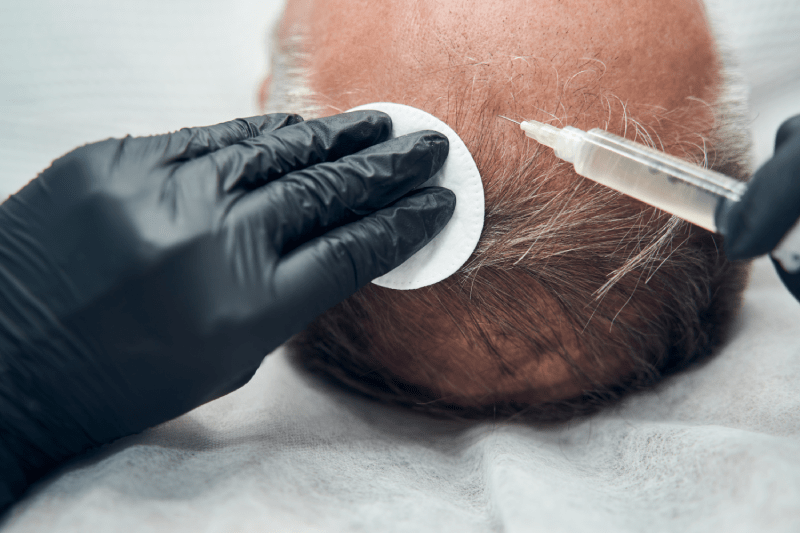
When Does The Redness And Scabbing On The Skin Disappear After Hair Transplantation?
Mild redness in the implanted area and the formation of small scabs around the grafts are expected after a hair transplant operation. The redness usually diminishes gradually within 2 to 4 weeks. The scabs, on the other hand, usually begin to shed after the 10th day with the special washing procedure and are completely cleared by the end of this period. It is vitally important not to forcefully pick at the scabs during this process to ensure healthy recovery.
When Can Hair Cutting Or Coloring Be Done After Hair Transplantation?
A certain period of waiting is required for cosmetic procedures like hair cutting and coloring after a hair transplant operation. Hair cutting (with scissors) should be done at least one month after the operation for the newly implanted hair follicles to fully settle and strengthen. For chemical processes like hair coloring, it is recommended to wait at least six months to allow the scalp to fully heal and the roots to become resistant to chemicals. Consulting your doctor is the most accurate way to confirm these timeframes.
Why Is Hygiene So Important During And After The Hair Transplant Operation?
Since hair transplantation is a surgical procedure, maintaining the highest level of hygiene during and after the operation is critical to prevent the risk of infection. It is essential that the operation is performed in a fully equipped and sterile hospital environment. Post-operatively, the patient must meticulously follow the doctor’s washing instructions, keeping the implanted area clean and dry. Failure to adhere to hygiene rules can compromise the health of the grafts and reduce the success of the operation.
What Are The Psychological Effects Of A Successful Hair Transplant?
In addition to the physical effects of a successful hair transplant operation, there are significant and positive impacts on the individual’s quality of life and psychology. Hair loss can lead to loss of self-confidence, social anxiety, and even depression in many people. The successful growth and natural appearance of hair following a successful transplant strengthens the person’s self-perception, makes them feel more comfortable in social settings, and significantly boosts their overall self-confidence level.
Why Can Cure Holiday Be A Reliable Partner In My Hair Transplant Journey?
Cure Holiday offers reliable and comprehensive health tourism consultancy, guiding you from the beginning to the end of your hair transplant process. They do not just direct you to a clinic; they meticulously plan your accommodation, airport transfers, and all post-operative follow-up procedures in Turkey. By collaborating with highly-rated centers that use state-of-the-art technologies and experienced teams, they aim to provide you with the most natural-looking results. Cure Holiday is a trusted partner where you can receive transparent answers to all your questions and create a personalized treatment plan with confidence.
